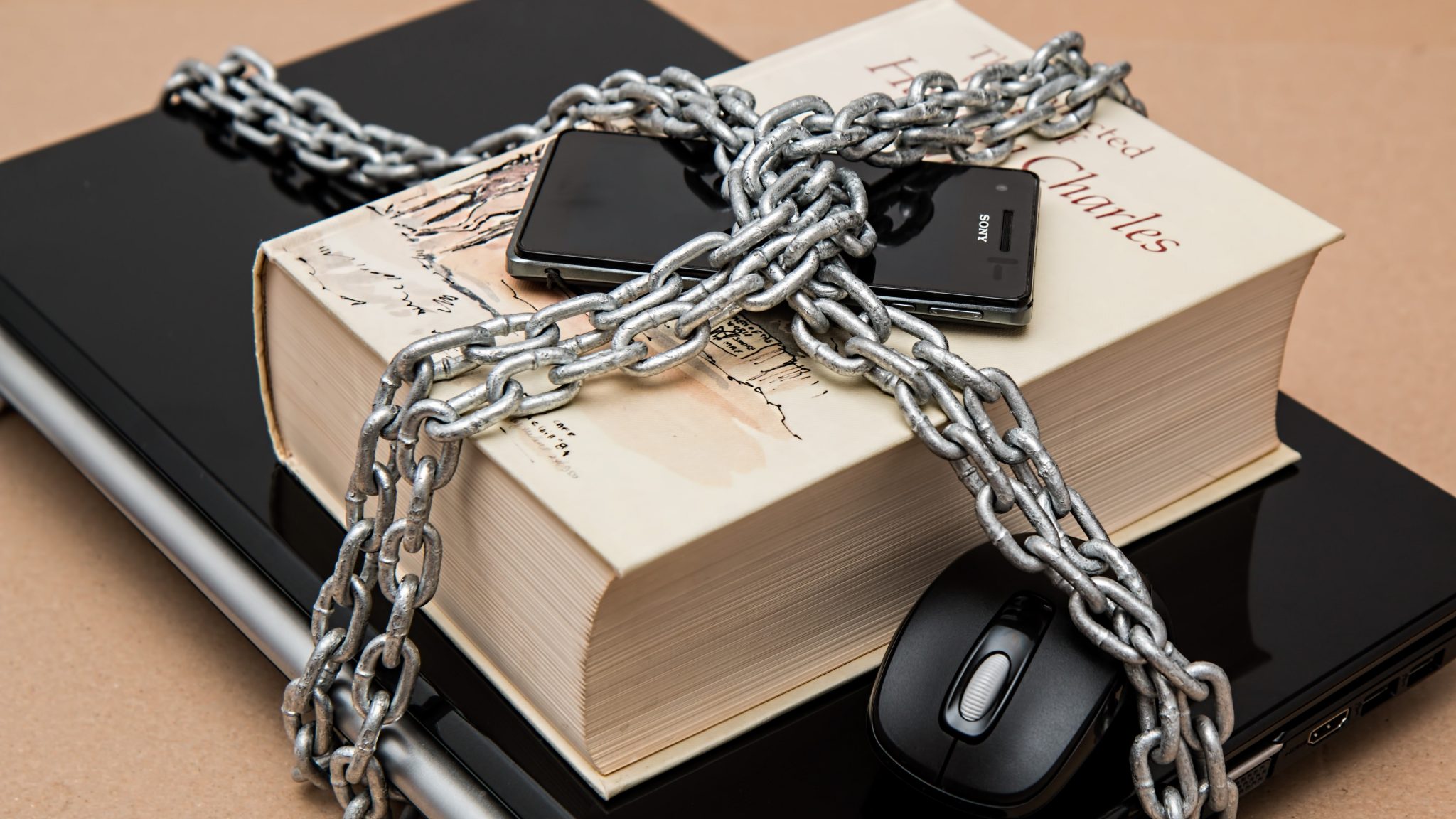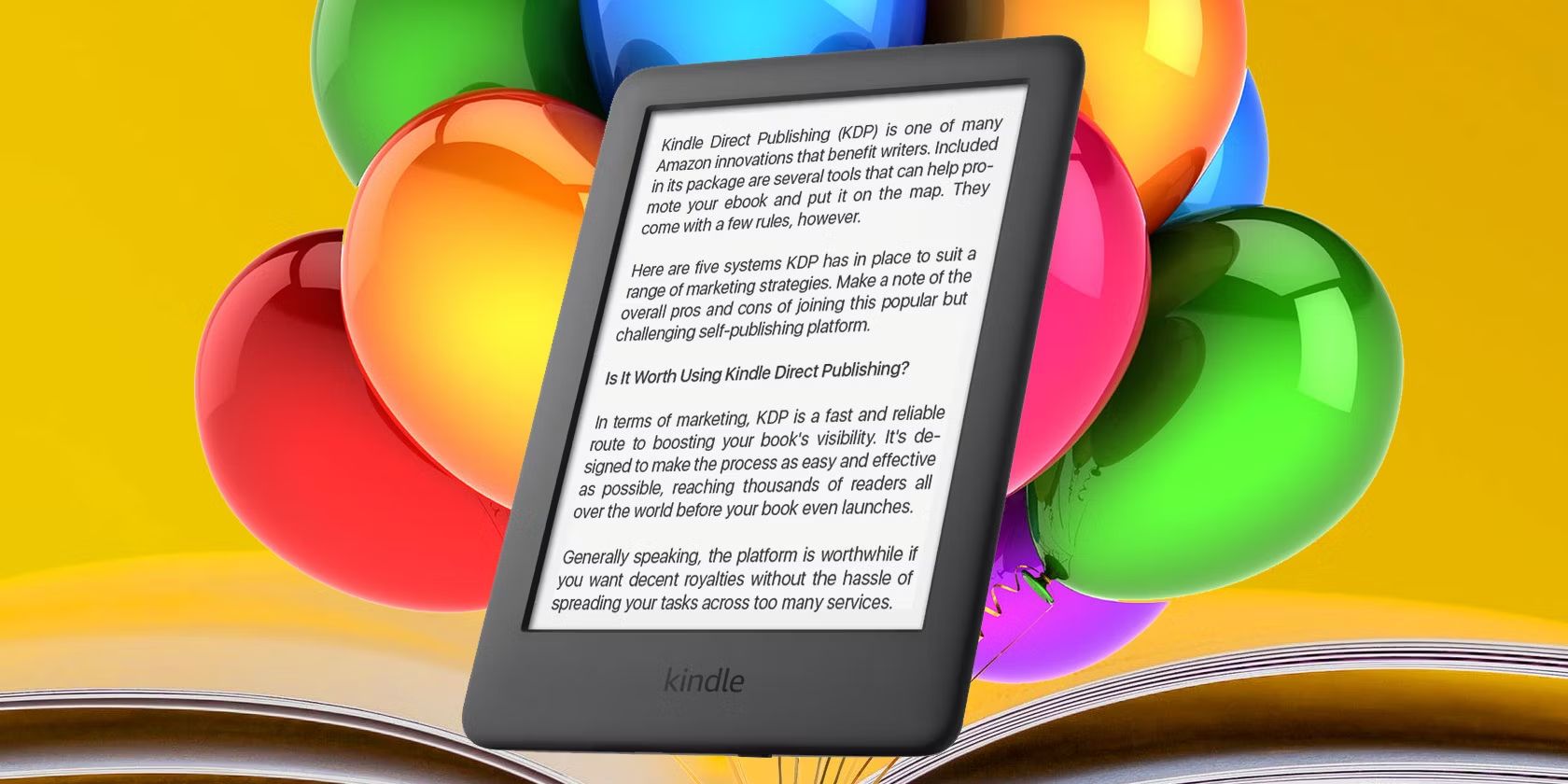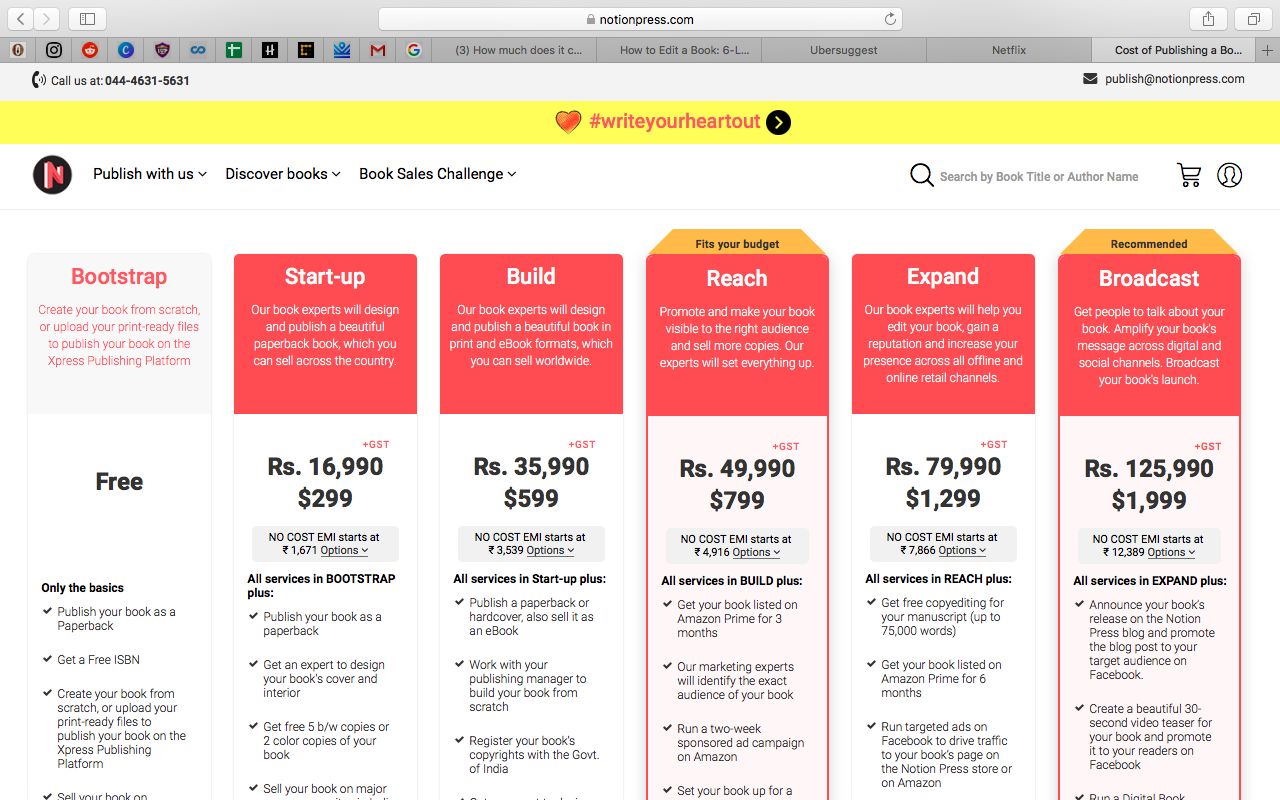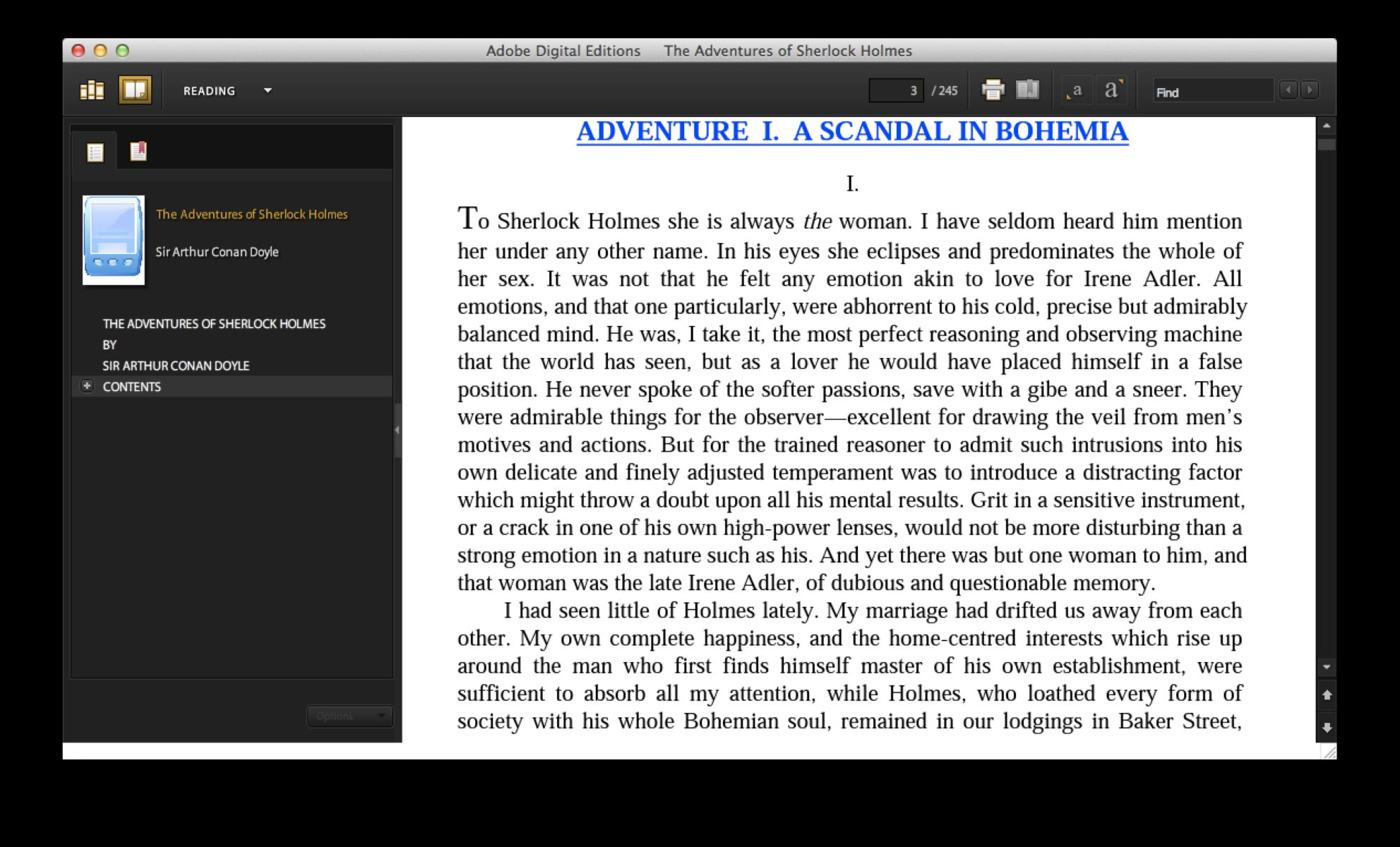Introduction
Welcome to the world of electronic books, or eBooks, where knowledge and stories can be easily accessed and enjoyed on digital devices. With the rise of technology, eBooks have become increasingly popular, offering convenience and accessibility to readers all around the globe.
However, just like with any valuable content, protecting your eBook is crucial. As an eBook author or publisher, you have invested time, effort, and passion into creating your work. It is only fair that you take steps to safeguard your intellectual property and ensure that your eBook is not illegally copied, distributed, or used without permission.
In this article, we will explore various ways to protect your eBook and prevent unauthorized access and distribution. From choosing the right format to using digital rights management (DRM) and securing your eBook files, we will cover essential strategies to protect your hard work and maintain control over your intellectual property.
Whether you are a self-published author, a small publishing house, or a corporate entity, understanding how to protect your eBook is vital in today’s digital landscape. By implementing the right measures, you can safeguard your eBook from copyright infringement, unauthorized sharing, and other forms of intellectual property violations.
Join us as we dive into the world of eBook protection and discover the tools and techniques that can help you secure your creative work. Let’s ensure that your eBook remains protected and your efforts continue to be rewarded.
Why Protecting Your eBook is Important
As an author or publisher, you might wonder why you need to go through the hassle of protecting your eBook. After all, isn’t the goal to reach as many readers as possible? While it’s true that you want your eBook to be widely accessible, it’s equally important to protect your intellectual property. Here are a few key reasons why protecting your eBook is crucial:
- Preserve your income: Your eBook represents your hard work and creativity. By protecting it, you ensure that you have the exclusive rights to distribute, sell, and profit from your creation. Without protection, your eBook could be illegally copied or shared, resulting in lost sales and potential revenue.
- Maintain control over your content: Protecting your eBook allows you to maintain control over how your content is used and shared. It ensures that only authorized individuals can access or distribute your work, preventing unauthorized edits or alterations.
- Prevent copyright infringement: Protecting your eBook helps to deter others from infringing on your copyright. Copyright infringement occurs when someone uses, copies, or distributes your work without permission. By implementing protection measures, you can discourage such violations and take legal action if necessary.
- Protect your brand and reputation: Your eBook is a reflection of your brand and reputation as an author or publisher. If your eBook is illegally distributed or shared, it can negatively impact your reputation and the perceived value of your work. By protecting your eBook, you maintain a strong brand identity and preserve your reputation in the industry.
- Encourage legitimate purchases: When readers know that your eBook is protected, they are more likely to purchase it from legitimate sources. By ensuring that unauthorized copies are not readily available, you create a sense of scarcity and exclusivity, motivating readers to obtain your eBook through proper channels.
By understanding the importance of protecting your eBook, you can take proactive measures to safeguard your intellectual property and ensure that your hard work is not exploited. In the next sections, we will explore different ways to protect your eBook, including choosing the right format, implementing digital rights management (DRM), securing your eBook files, and safeguarding your distribution channels.
Choosing the Right Format for Your eBook
When it comes to protecting your eBook, the first step is to choose the right format. Selecting a format that supports encryption and other security features is essential for maintaining control over your content. Here are some popular eBook formats to consider:
- EPUB: EPUB (Electronic Publication) is a widely used format compatible with various eReaders and devices. EPUB supports DRM protection, allowing you to encrypt your eBook and control its distribution. With EPUB, you can set restrictions on copying, printing, and sharing, providing an extra layer of protection for your content.
- PDF: PDF (Portable Document Format) is another popular format known for its compatibility across devices and operating systems. While PDF does not natively support DRM, you can still apply password protection and encryption to restrict access to your eBook. PDF is suitable for nonfiction eBooks or those with complex layouts that need to maintain a consistent visual structure.
- MOBI: MOBI (Mobipocket) format is commonly used for Amazon Kindle devices. MOBI files can support DRM protection, allowing you to protect your eBook from unauthorized distribution. If your target audience primarily uses Kindle devices, choosing the MOBI format can ensure a seamless reading experience for your readers.
- AZW: AZW is an eBook format specific to Amazon Kindle devices and apps. With AZW, you have the option to apply DRM protection, restricting access to your eBook and preventing unauthorized sharing. If your primary distribution platform is Kindle Direct Publishing (KDP), choosing the AZW format is essential for protecting your eBook.
When selecting a format, consider your target audience, distribution platforms, and the level of control you want over your content. It’s important to note that while DRM protection can enhance security, it may also limit the flexibility of your eBook for readers who prefer to have unrestricted access to their purchased content. Striking the right balance between protection and user experience is key.
Additionally, always ensure that the format you choose adheres to industry standards and is widely accepted across different devices and platforms. This way, you can reach a broader audience while maintaining the security of your eBook.
Remember, choosing the right format is the foundation for protecting your eBook. In the following sections, we will delve into additional strategies, such as watermarking your eBook, using DRM, securing your eBook files, and safeguarding your eBook distribution channels, to further enhance the security and protection of your valuable content.
Watermarking Your eBook
One effective way to protect your eBook from unauthorized sharing and distribution is by using watermarking. A watermark is a visible or invisible mark embedded into your eBook’s pages or content, which can help identify the original source of the eBook and deter individuals from making unauthorized copies.
Here are some key benefits of watermarking your eBook:
- Proof of ownership: By adding a visible watermark with your name, logo, or copyright information, you establish yourself as the rightful owner of the eBook. This serves as a deterrent to potential infringers and emphasizes your rights over the content.
- Deter unauthorized sharing: Watermarking your eBook with visible text or images can discourage readers from sharing the content freely. Those who come across your eBook with a visible watermark are less likely to distribute it without permission, as it will always be traceable back to the original source.
- Protect against digital piracy: Visible watermarks make it difficult for pirates to profit from unauthorized copies of your eBook. They act as a visual reminder that the eBook is protected by copyright laws, potentially reducing the demand for pirated versions.
- Track unauthorized distribution: Invisible watermarks, also known as digital watermarks, can be embedded within the eBook’s content without altering the reading experience. These watermarks contain hidden information that uniquely identifies the eBook and can help track illegal distribution if it occurs.
When watermarking your eBook, it’s important to strike a balance between visibility and reader experience. Visible watermarks should be placed strategically to avoid obstructing the text or interfering with the readability of the eBook. Invisible watermarks, on the other hand, should be embedded securely to prevent easy removal or tampering.
Additionally, consider including a notice or statement in your eBook to inform readers about the presence of watermarks. This increases transparency and reinforces the importance of respecting copyright and intellectual property rights.
Watermarking is a valuable tool in protecting your eBook from unauthorized use and distribution. While it may not completely eliminate piracy, it serves as a deterrent and strengthens your legal position in cases of copyright infringement. By incorporating watermarking into your eBook protection strategy, you take an extra step towards safeguarding your creative work.
Using DRM (Digital Rights Management)
Digital Rights Management (DRM) is a technology that enables you to protect your eBook by controlling its use and distribution. DRM ensures that only authorized users can access your eBook, preventing unauthorized copying, sharing, and modification. Here are key advantages of using DRM for eBook protection:
- Access control: DRM allows you to control who can access your eBook. You can restrict access to specific devices, limiting the ability for unauthorized users to view or distribute your content.
- Copy protection: DRM protects your eBook from being easily copied or duplicated. It encrypts the eBook files, making it challenging for individuals to create unauthorized copies and distribute them.
- Usage restrictions: With DRM, you can impose limitations on how users interact with your eBook. You can control features like printing, copying, and sharing, ensuring that your content is used within the terms specified by you.
- Offline protection: DRM can provide protection even when the eBook is accessed offline. By validating the user’s credentials or requiring periodic online authentication, DRM ensures that unauthorized copies cannot be used without authorization.
- Tracking and analytics: DRM solutions often come with tracking and analytics features. These allow you to gather insights into how your eBook is being used, track distribution channels, and detect any unauthorized usage or distribution.
When choosing a DRM solution, consider factors such as the compatibility with your eBook format, the level of control it provides, and the ease of implementation. Several DRM providers offer customizable solutions that blend security with user experience, ensuring that readers can access the eBook while still safeguarding your content.
It’s important to note that DRM is not foolproof and can be circumvented by determined individuals. However, DRM technology acts as a deterrent and creates a barrier that prevents casual unauthorized copying and distribution of your eBook. It serves as an important layer of protection in your overall eBook security strategy.
Remember to strike a balance between the level of protection and the user experience. Excessive DRM measures might frustrate legitimate users, so finding the right balance is crucial.
By implementing a DRM solution, you can significantly enhance the security of your eBook and maintain control over its distribution and usage. In the next section, we will explore strategies for securing your eBook files to further safeguard your content.
Securing Your eBook Files
Securing your eBook files is essential to protect your content from unauthorized access and manipulation. By implementing robust security measures, you can ensure that your eBook files remain safe and intact. Here are some key strategies for securing your eBook files:
- Encryption: Encrypting your eBook files is a fundamental step in securing your content. Encryption converts your eBook files into unreadable data, which can only be accessed with the decryption key. This prevents unauthorized individuals from gaining access to your eBook’s contents.
- Password protection: Passwords add an extra layer of security to your eBook files. You can encrypt your files and require a password to access and open them. Ensure that you choose a strong, unique password and share it only with authorized individuals.
- File format limitations: Consider limiting the file formats your eBook is distributed in to minimize the risk of unauthorized edits or alterations. By controlling the file formats, you can ensure that your content is displayed as intended and prevent potential modifications that could harm your reputation.
- File integrity checks: Implement measures to validate the integrity of your eBook files. File integrity checks can detect any modifications or tampering with the files, alerting you to unauthorized changes and ensuring the authenticity of your content.
- Secure file hosting: If you host your eBook files on a website or cloud storage, choose a secure hosting provider that offers robust security features. Look for hosting services that provide encryption, regular backups, and protection against data breaches.
Additionally, consider limiting access to your eBook files by implementing restrictions such as user-specific DRM or time-limited access. This allows you to control who can access your eBook and for how long, preventing unauthorized distribution or access after a specified period.
Regularly update and backup your eBook files to protect against data loss or corruption. Maintain multiple copies of your files in secure locations, ensuring that you have backups in case of unexpected incidents or hardware failures.
It’s worth noting that no security measure is 100% foolproof, but by implementing these strategies, you significantly decrease the risk of unauthorized access, modification, or distribution of your eBook files.
In the next section, we will explore ways to protect your eBook from copyright infringement, ensuring that your hard work remains respected and valued.
Protecting Your eBook from Copyright Infringement
Copyright infringement is a serious concern for eBook authors and publishers. It occurs when someone uses, copies, distributes, or claims your work as their own without permission. To protect your eBook from copyright infringement, consider the following strategies:
- Registration and copyright notice: Register your eBook with the appropriate copyright office or intellectual property organization in your jurisdiction. This helps establish your legal rights and provides evidence of ownership in case of disputes. Additionally, include a copyright notice in your eBook, clearly stating your ownership and the need for permission before reproducing or distributing the work.
- Monitoring online platforms: Regularly monitor popular online platforms, eBook marketplaces, and file-sharing websites for unauthorized copies of your eBook. Use digital tools or services that can automate this process and alert you to potential copyright infringements.
- Send takedown notices: If you find instances of copyright infringement, promptly send takedown notices to the relevant platforms or individuals. These notices request the removal or disabling of access to the infringing content. Provide the necessary evidence and documentation to support your claim of ownership.
- Use digital watermarks: We’ve discussed watermarking earlier, but it’s worth mentioning again. Digital watermarks can help deter copyright infringement by embedding hidden information in your eBook. If someone tries to distribute an unauthorized copy, the watermark can be traced back to the original source.
- Seek legal support: If copyright infringement persists or escalates, consult with an intellectual property attorney who specializes in copyright law. They can guide you through the legal process and advise on the best course of action to protect your rights.
It’s important to note that preventing all instances of copyright infringement may be challenging, especially with the ease of digital distribution and the anonymity it can offer. However, by utilizing these strategies and being proactive, you greatly reduce the risk and demonstrate a commitment to protecting your creative work.
Remember to keep records of all your copyright registrations, correspondence, and evidence of ownership. These documents can strengthen your case if legal action becomes necessary.
In the next section, we will discuss ways to safeguard the distribution of your eBook, ensuring that it reaches your intended audience through authorized channels.
Safeguarding Your eBook Distribution
Ensuring that your eBook is distributed through authorized channels is crucial to protect your content and maintain control over its availability. Safeguarding the distribution process helps prevent unauthorized copying, distribution, and piracy. Here are some strategies to safeguard your eBook distribution:
- Select trusted distribution platforms: Choose reputable eBook distribution platforms that have established security measures in place. Research and verify the platform’s reputation, user reviews, and the level of control they provide over your eBook’s distribution.
- Use secured delivery methods: When delivering your eBook to customers or distributing it to sellers, utilize secure methods that prevent unauthorized access or interception. Consider using secure file transfer protocols (FTP), encrypted email attachments, or secure download links.
- Implement unique identifying codes: Assign unique identification codes to your eBooks or purchase orders. This helps track and identify the source of any unauthorized copies or distribution. It also adds an additional layer of protection and accountability.
- Manage distribution through licensing: Explore licensing options to control how your eBook is distributed. Licensing can help you establish specific terms and conditions, granting rights to authorized entities while restricting unauthorized sharing or distribution.
- Monitor authorized sales channels: Regularly monitor your authorized sales channels for any signs of unauthorized activity or violations. Keep an eye on sales reports, customer feedback, and online reviews to identify any potential issues that may arise.
- Establish contractual agreements: When working with distributors or resellers, ensure that you have clear contractual agreements in place that specify the terms of distribution, ownership rights, and obligations. This helps mitigate potential disputes and provides legal recourse if necessary.
Additionally, consider offering incentives for customers to purchase your eBook from legitimate sources. For example, provide bonus content, exclusive updates, or special offers that are only available to those who purchase the eBook from authorized channels. This helps incentivize customers to support your work and discourages them from seeking unauthorized copies.
Remember that no strategy can completely eliminate the risk of unauthorized distribution, but by employing these safeguards, you can minimize the chances and have more control over how your eBook reaches readers.
With these measures in place, you can safeguard your eBook’s distribution and ensure that it is only accessible through authorized channels. In the final section, we will recap the key points discussed and emphasize the importance of implementing a comprehensive eBook protection strategy.
Conclusion
Protecting your eBook is essential to safeguard your intellectual property, preserve your income, and maintain control over your content. By implementing an effective eBook protection strategy, you can mitigate the risks of unauthorized copying, distribution, and copyright infringement. Here are the key takeaways from this article:
- Choose the right format for your eBook, considering compatibility and built-in security features.
- Consider watermarking your eBook to deter unauthorized sharing and track potential infringements.
- Utilize Digital Rights Management (DRM) to control access and usage of your eBook.
- Implement robust security measures to secure your eBook files, such as encryption and password protection.
- Take steps to protect your eBook from copyright infringement, including registration, monitoring, and sending takedown notices.
- Safeguard the distribution of your eBook by selecting trusted platforms, securing delivery methods, and managing licensing agreements.
It’s important to strike a balance between protection and user experience. Excessive protection measures may inconvenience legitimate users, so finding the right balance is crucial.
Remember to stay vigilant and regularly monitor your eBook’s distribution and online presence. Continuously evaluate the effectiveness of your protection measures and adapt as needed to stay ahead of potential threats.
While no strategy can provide 100% protection, by employing a comprehensive eBook protection strategy, you can greatly reduce the chances of unauthorized copying, distribution, and piracy.
Protecting your eBook not only safeguards your hard work and creativity, but also ensures a fair and sustainable environment for authors, publishers, and readers alike. By respecting and enforcing intellectual property rights, we can promote a vibrant and thriving digital publishing ecosystem.

























